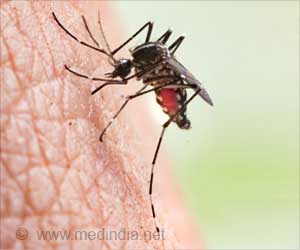The first casual link between climate change and the timing of a natural event, which is namely the emergence of the common brown butterfly, has been established by scientists.
The first casual link between climate change and the timing of a natural event, which is namely the emergence of the common brown butterfly, has been established by scientists.
Although there have been strong correlations between global warming and changes in the timing of events such as animal migration and flowering, it has been hard to show a cause-and-effect link.According to a report in New Scientist, this is what Michael Kearney and Natalie Briscoe of the University of Melbourne, Australia, have now done.
The researchers compared temperature changes in Melbourne - where the butterfly is common - with recorded observations of the first brown butterfly to be seen in the spring since the 1940s.
With each decade, the butterflies emerged 1.6 days earlier and Melbourne heated by 0.14 degree Celsius.
"Overall, the butterfly now emerges on average 10.4 days before it did in the 1940s," said Kearney.
"And we know the rise in air temperature links to butterfly emergence in a cause-and-effect pattern," he added.
Advertisement
First, they placed eggs of the butterfly, Heteronympha merope, in chambers where temperature could be controlled and found that each larval stage has a different response to warmer-than-normal conditions.
Advertisement
"The egg, which is laid in late summer, and the first larval stage do well at high temperatures," he said.
The second to the fifth stages occur in winter and can't survive high temperatures.
The knock-on effect is that the caterpillar pupates earlier and the butterfly emerges sooner.
Second, Kearney and Briscoe made a mathematical model combining these physiological effects of temperature on development with climate data.
The model precisely matched the observed changes in butterfly emergence date.
The researchers used several climate models to find out what is likely to have caused the rise in Melbourne's temperature, and ruled out the possibility that natural weather events could account for the warming.
"There is a very high likelihood that the locally observed climate change is human-caused," said Kearney.
The female waits until the end of summer to lay her eggs, ensuring that the larva's development stages align with the seasons.
According to Kearney, if summers are longer, the female must "wait around", and it's unknown if her lifespan can cope.
"It also may be too warm for the developing butterfly to get through the larval stages," said Kearney.
Source-ANI
TRI










